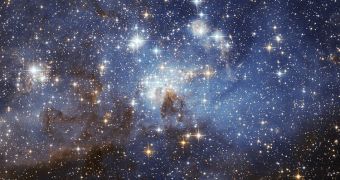In a paper published in the December 7 issue of the top scientific journal Nature, experts at the Catholic University of Leuven, in Belgium, reveal that the cores of red giants spin much faster than their surfaces do. This is the primary mechanism through which phenomena called starquakes appear.
A starquake is a phenomenon that was discovered relatively recently. It occurs when seismic waves travel at the surface of a star, but also reach deep underground. The same thing happens on Earth during a large earthquake, geologists say.
The most interesting thing about the new study is that it provides a new way of looking at how stellar cores evolve during their life spans. Analyzing the surface of stellar objects is relatively simple, especially if they are nearby, but their cores remain hidden until they blow up.
Even when a star goes supernova, its core usually collapses into either a neutron star or a black hole. In Sun-like stars – the most likely category to develop into red giants at the end of their main-sequence – the core most often collapses into a helium-burning white dwarf.
What is also very interesting is that this fate is reserved for the Sun. The transformation into a red giant will begin in about 5 billion years, after which time the star will shed its outer atmosphere, and turn into a white dwarf. Mercury, Venus and Earth will be vaporized in the process.
The team behind this new study was able to provide the first evidence that the cores of stars indeed spin faster when they diminish in size. This has been hypothesized for many years, but astronomers failed to obtain clear, direct evidence that the phenomenon was taking place, Space reports.
In the study, the group was able to determine that the cores of red giants spin at least 10 times faster than their surfaces. This triggers numerous starquakes, which affect both the surface and the interior, and generate impressive sound waves.
Through a new field of science called asteroseismology – which deals with studying quakes in stars – experts can use the rhythmic vibrations these objects experience during tremors to gain a deeper understanding of what goes on at their cores.
“We are able to sense deep below the surface of distant stars and can probe the rotation of their core. Understanding how a star rotates deep inside helps us to understand how stars like our sun will grow old,” CUL astronomer and lead study author Paul Beck explains.

 14 DAY TRIAL //
14 DAY TRIAL //